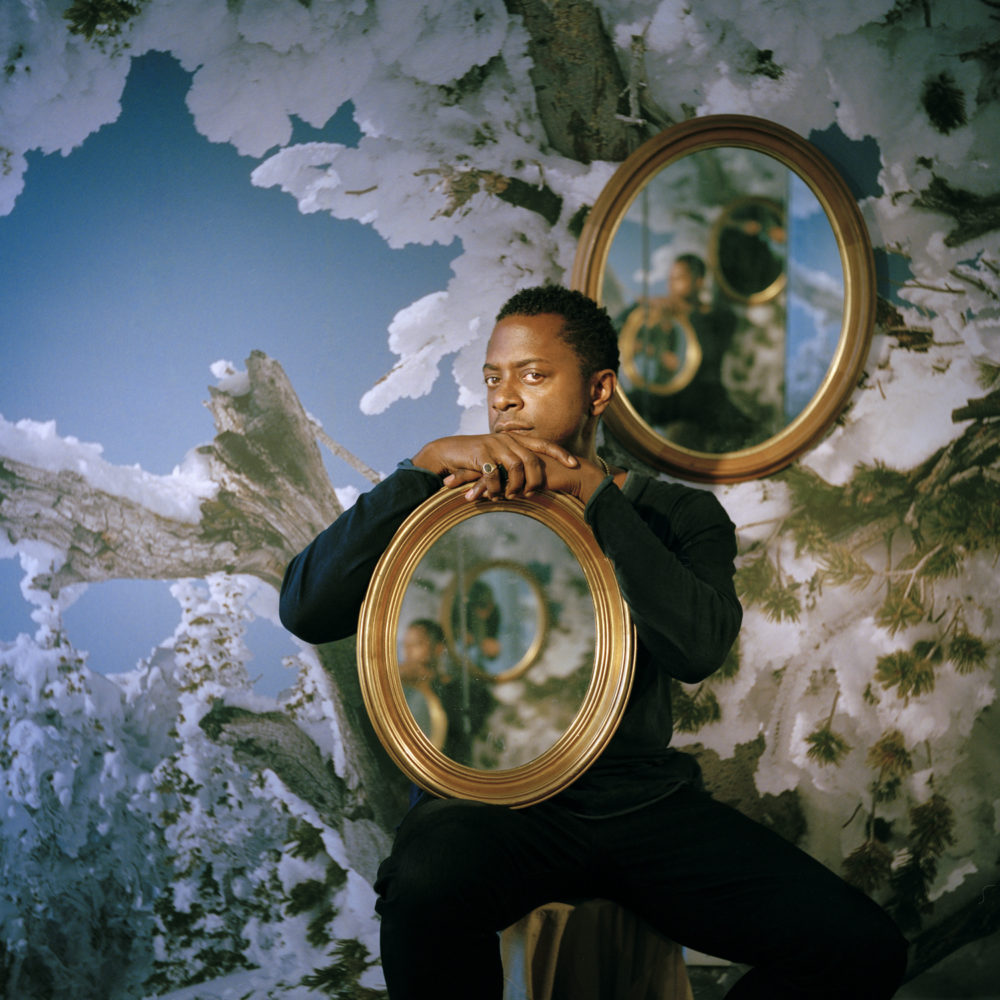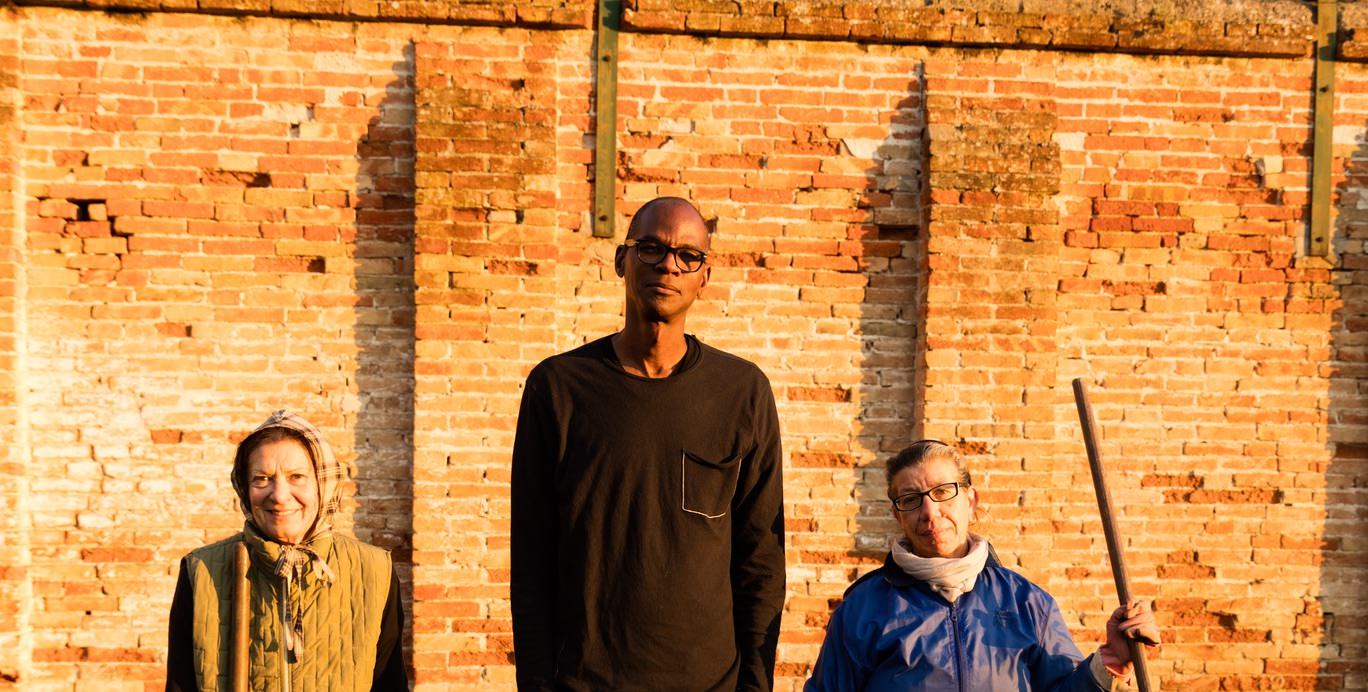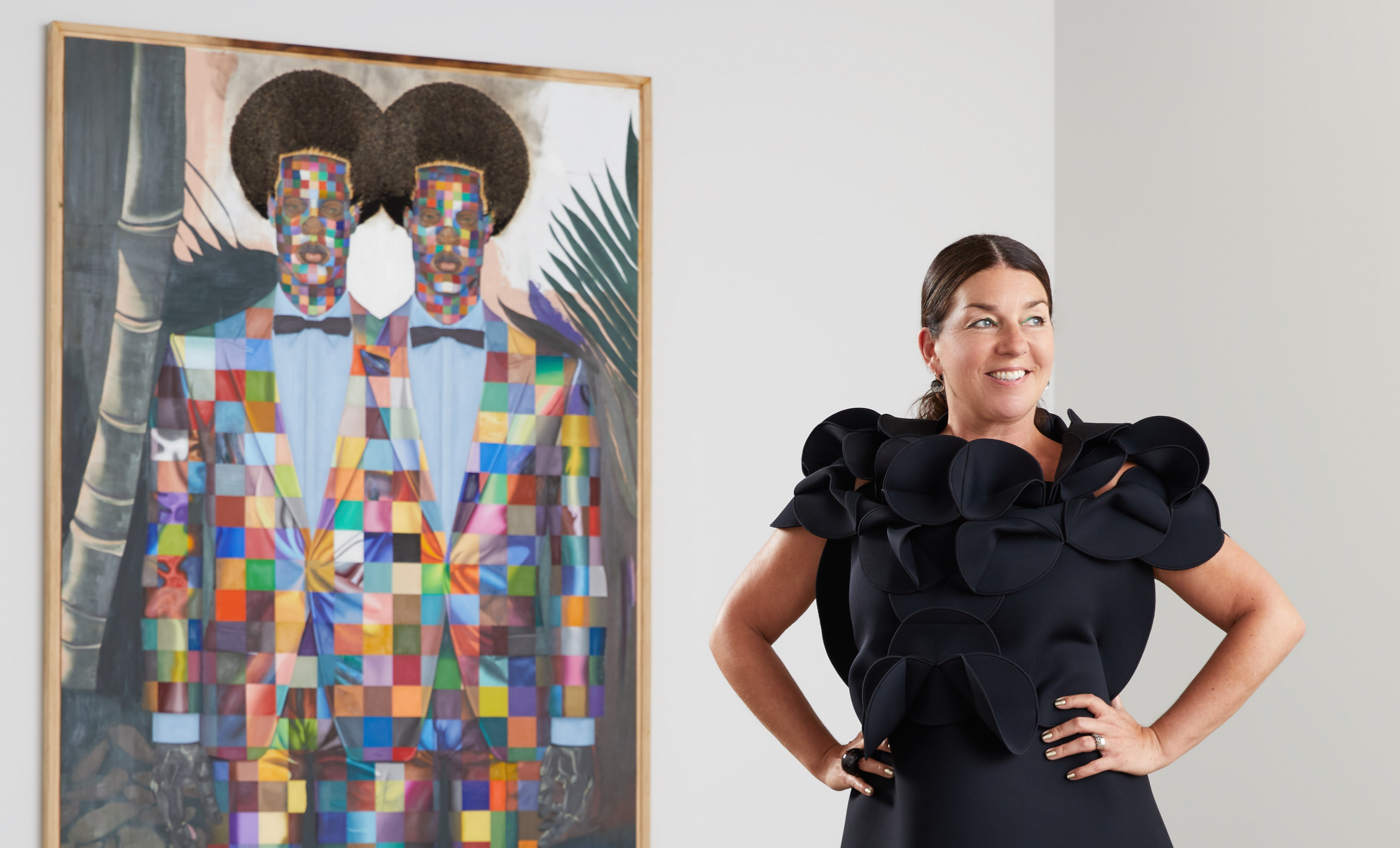Sanford Biggers was back in New York, after opening his solo show at Monique Meloche Gallery in Chicago, “the pasts they brought with them,” and giving a talk at the TED conference in Vancouver in February, having been named a TED fellow early this year. It was the week of the Armory Show in early March, and he was showing us around his studio in Washington Heights. Some of his quilt paintings hung on the wall, as well as some of the small wooden African statues he had used and shot at a gun range, an event that was filmed and made into a haunting video in the Monique Meloche show. The video, and the resulting disfigured figurines were meant to memorialize victims of recent and past racial violence in the U.S., with notes like “(for Michael)” and “(for Sandra)” in their titles—making a clear reference to Michael Brown and Sandra Bland. Biggers, born in L.A. and currently an assistant professor at Columbia University, spoke with us about that project, the perks of being one of the TED elite, and his upcoming show at Museum of Contemporary Art Detroit (on view from September 9, 2016, to January 1, 2017).
WHITEWALL: Before coming to New York, we saw your show “the pasts they brought with them,” at Monique Meloche in Chicago. It was a really powerful exhibition. Can you tell us about the starting point for that body of new work?
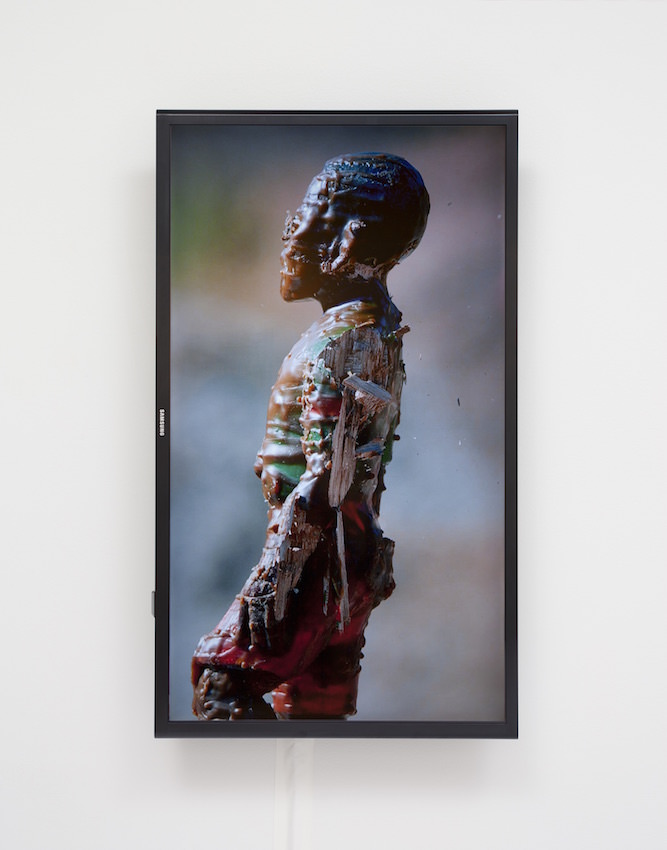
Sanford Biggers, BAM (For Michael), 2015 HD video, 1:22, courtesy of the artist and Monique Meloche Gallery, Chicago.
SANFORD BIGGERS: Thanks. I put a lot of work into that. That new body of sculptures came from a very visceral and automatic place. I realized the work—the videos and the cast pieces—started to take on its own life. And it references so many different modes of arts and representation and memorialization and classic sculpture techniques and contemporary issues, that it’s sort of like the perfect storm of entry points for me. And I think it’s translating to people as well.
WW: It’s hard not to respond to it.
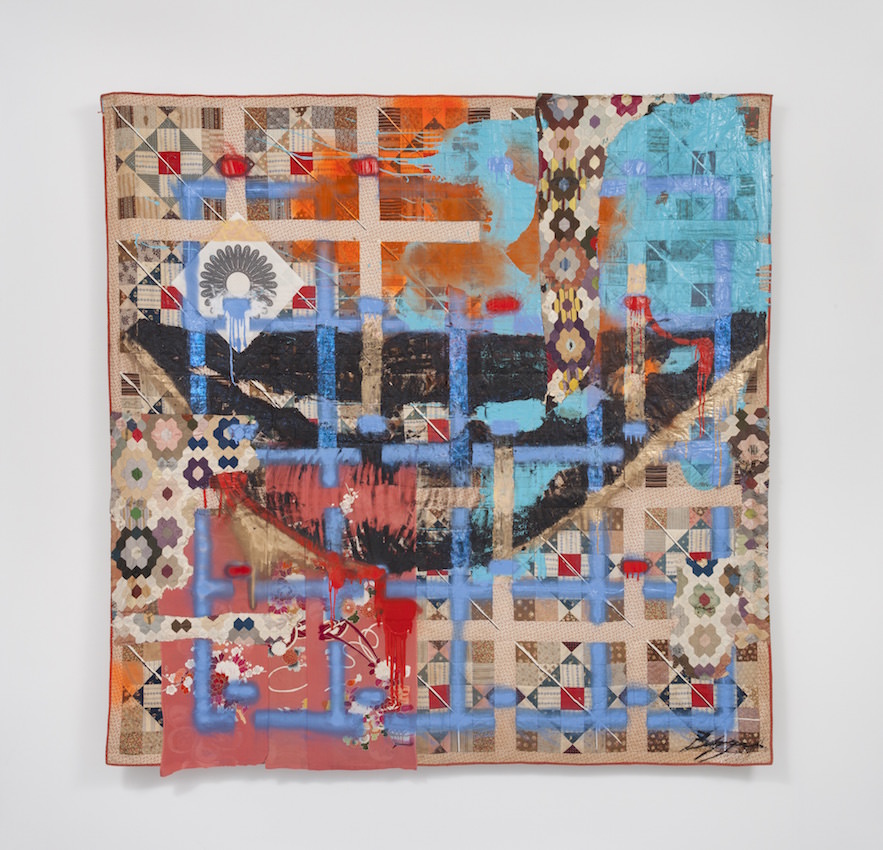
Sanford Biggers, Hat & Beard, 2016 Glitter, tar, acrylic, oil stick, spray paint, assorted textiles, and screen printed fabric on antique quilts 79 x 79 inches, courtesy of the artist and Monique Meloche Gallery, Chicago.
SB: They are. There are two of the wooden remnants [from the videos] right there [gesturing to a table in the studio]. They start like this dipped into brown wax.
WW: Why dip them in wax?
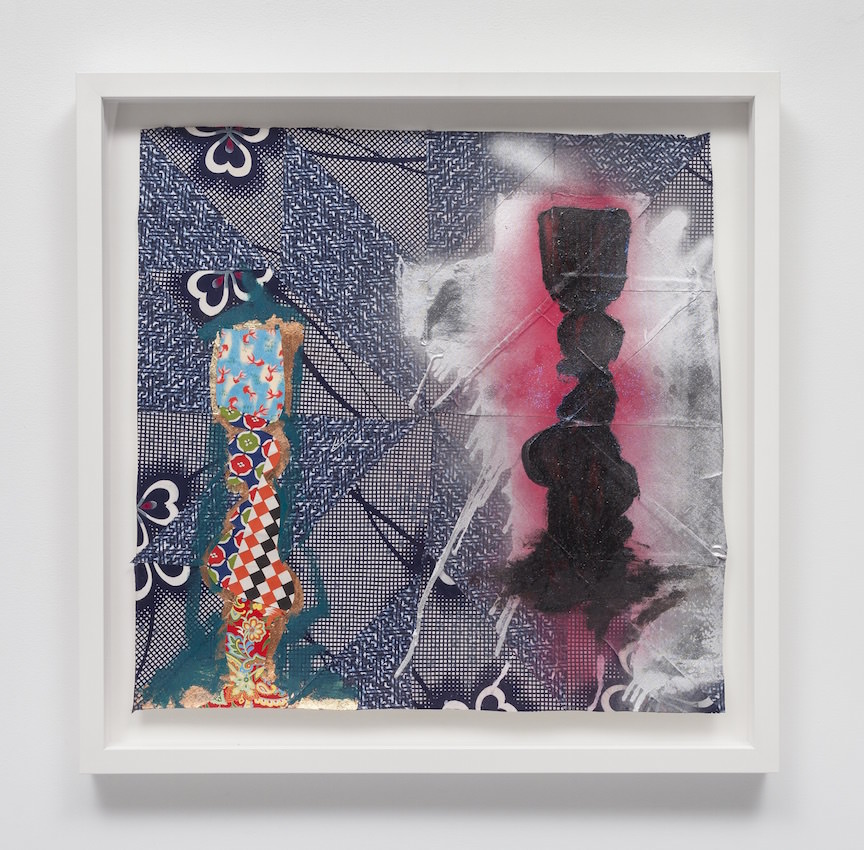
Sanford Biggers, MARTYR, 2016 Glitter, gold leaf, copper leaf, tar, spray enamel, acrylic paint, assorted textiles on handmade paper, 24 x 24.5 inches, courtesy of the artist and Monique Meloche Gallery, Chicago.
SB: To make them more obscure so that they look the same, so you don’t really invest any personality into them. And also because some of them are straight-up knock-offs. Then we take them to the shooting range and just shoot them. You can see all bullet holes and the chipping and fragmenting that happens. And this first batch was sort of the prototype to figure out if the system even works and what would I come out with. I’m going back to L.A. in two weeks and I’ll be doing a new batch. I’ll be doing some larger pieces so I can use even heavier artillery. I really want to be using 9 millimeters, which is what cops have.
WW: The shooting range is in L.A.?
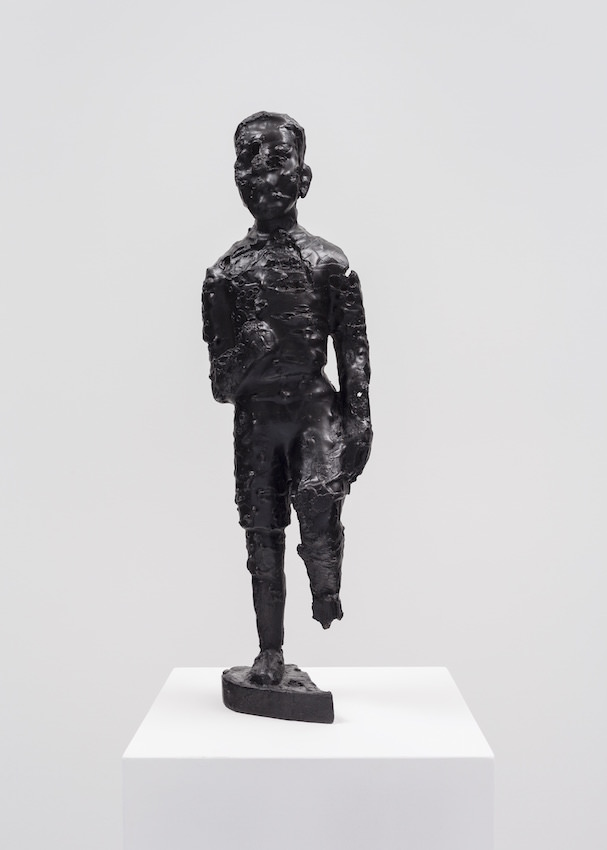
Sanford Biggers, BAM (For Michael), 2016 Bronze with black patina, unique 19 x 6 x 4 inches, courtesy of the artist and Monique Meloche Gallery, Chicago.
SB: It’s outside of L.A. A friend of mine, my DP actually, found the place. And the way we shoot it is with the guns on tripods. I’m not that much of a marksman. I don’t pull the trigger. He pulls the trigger. It’s a whole thing about energy transferal.
On some level it’s like science project, with high-speed cameras, tripods, and how can we get it to the capture a bullet in midair? And then there’s the conceptual side, which is weighted and political-heavy. And then there’s the aesthetics. I think these are really gorgeous. I’ve never shown the wooden versions. I’m just holding onto those because on some level those ended up being the most powerful. These end up being the most powerful in terms of power objects.
WW: Changing subjects a bit, you were just in Vancouver for the TED conference. What’s it like being named a fellow?
SB: It’s pretty amazing. They gave us a dedicated person to help us with PR and we have access to all of their different outlets: their multiple websites, their conferences; they have retreats that do not get televised that are like think tanks that happen between Canada and the U.S. There’s a larger network of us in league with the other speakers in the TED network and supporters and participants of the TED conference. It’s access to the point that we’re no longer talking to the secretaries, we’re talking to the people, which is invaluable.
It’s a very large access point, and a distribution point, in terms of information, which I find particularly interesting for my work because I do feel that the information and the themes that I’m dealing with surpass and go beyond the walls of the art world. That’s why TED was an interest for me.
WW: Were there people there that you had in mind that you wanted to connect to?
SB: I figured it was best to go in with an open mind, just have conversations and see where they led. I was interested in the nonobvious connection. I feel like sometimes the art world is very limited. It’s very a small, cliquish, niche universe.
I’m flying to Alabama next week to speak with Bryan Stevenson [of Equal Justice Initiative] about a museum he’s developing that’s dedicated to the Underground Railroad, lynching, and incarceration and we’re talking about the banisters and some presence of artwork there. They’re working with the same team that did the 9/11 memorials.
WW: Do you know yet about your upcoming solo show at MOCAD?
SB: It’s a site-specific installation. It’ll be a combination of sculptures and my band Moon Medicin will come, and we’ll probably do performance in the space where we will videotape. And then we want to use augmented reality or virtual reality to show our performance after we’re gone. As a sort of installation, sculpture artist, I like being flexible and nimble in places like that, being influenced by the architecture or the context, as opposed to just making stuff here and plopping it there.
Detroit was already on my radar because my band [Moon Medicin] did a project in Kentucky, of all places, where a collector of mine gave us access to his barn and we just made a mobile recording studio there for two weeks and made around 10, 11 songs that are being mixed now and will be ready for Detroit. We’re going to get one of the old buildings or old homes in Detroit for the summer and set up a studio there and record more material and rehearse and create the performance that we will then happen for the MOCAD show.
This article is published in Whitewall‘s summer 2016 Design Issue.





